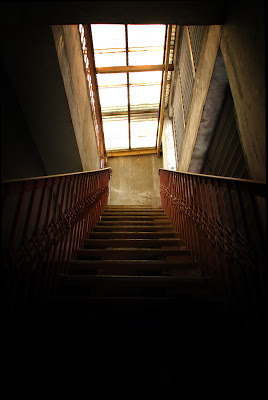Other friends lived in similarly old, minimally electrified, cavernous houses on large properties with tumble-down barns, sheds, guest houses, gazebos, stables, etc. This was the 60s and 70s, in rural New York, and the gentrification push from New York City hadn’t yet begun. One of my friends actually lived on the grounds of a sprawling old mental hospital, and we wandered freely, poking our noses into rooms, or trying to wipe the grime off the windows of locked buildings so we could spy. We played in settings that have become horror movie standards, but back then it was just normal: usually fun, occasionally mysterious, with a once-in-a-while dip into real fright. But still normal. It was the brand-new homes with wall-to-wall carpeting, bright overhead lights, and shiny matching appliances that were truly foreign to me. Only one of my friends lived in such an outlandish house as that.
I don’t know how many kids today get to roam around by themselves in such liminal spaces. As you may recall from my post about bedtime stories, liminal refers to thresholds. These places are neither here nor there, inside nor outside, inhabited nor empty. They are all between. They are openings, waiting in suspended time. It is here that the hero can experience the call to adventure, the invitation to step into the unknown and begin the quest. Yes, there is fear in the unknown, and fear in shadowy spaces. But I think that I, for one, spent much of this time unconsciously testing myself, measuring my courage against the courage I discovered in stories. If I had discovered a wardrobe that led into another world, I would have been ready.

